The Geography of
New Mexico
Why visit New Mexico?
New Mexico is georgous. The landscape ranges from the high desert of eastern New Mexico to the mountains of central New Mexico, with Albuquerque at its heart. There are plenty of interesting things to see and do in this diverse state, travelling across the Great Plains or the Rocky Mountains; or sightseeing the monumental Carlsbad Caverns; White Sands National Park; and Gila Cliff Dwellings National Monument. Every location invites exploration of the natural wonders that make New Mexico famous.
Contents
Map
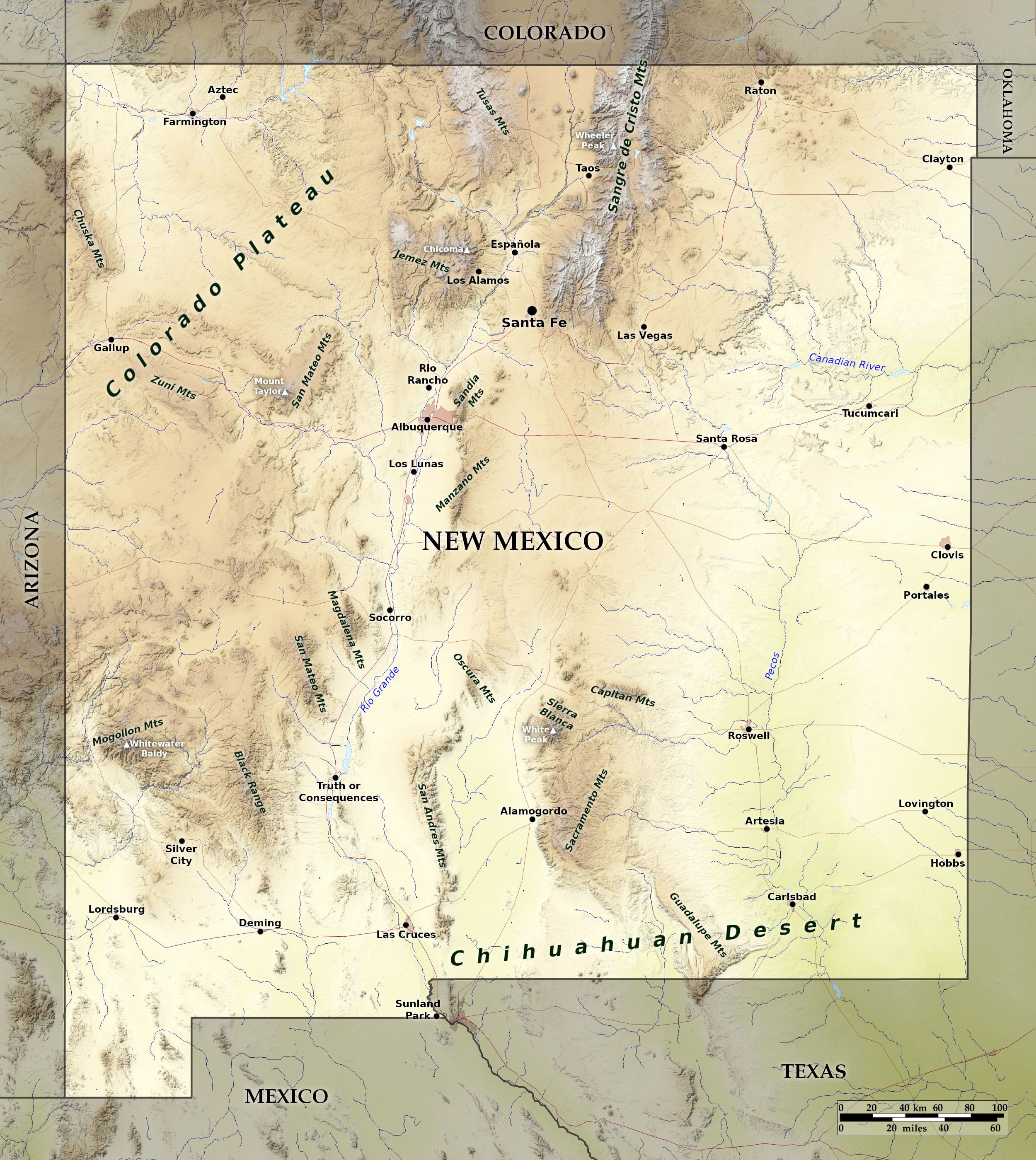 Relief map of New Mexico
Relief map of New Mexico
What is the landscape of New Mexico like?
New Mexico is a land of mountains and high plateaus. Broadly speaking, it is a vast tableland sloping down to the south and east, and interrupted by ranges of mountains.
Rocky Mountains
The Rocky Mountains enter New Mexico near the centre of the northern boundary. The main ridge is the Sangre de Cristo Mountains, lying east of the Rio Grande, extending as far south as the city of Santa Fé. It contains many of the highest peaks in New Mexico, among them Wheeler Peak, the highest point in the State at 13,167 feet (4,013 m).
Colorado Plateau
To the west lies a series of lower ranges, also a part of the Rocky Mountain system. Then comes the Colorado Plateau which contains many lava flows and extinct volcanic mountains, one of the most imposing of those in New Mexico being the Mount Taylor volcano (11,305 feet / 3,446 m), which is surrounded by lava tables and some of the most wonderful volcanic buttes in the world. A conspicuous feature of the New Mexican landscape is the mesa, a flat-topped hill projecting above the surrounding country like a table. A notable example is the mesa of Acoma, in Valencia county, capped with volcanic rocks; upon its summit, about 350 feet (100 m) above the plain, is the Indian pueblo of Acoma.
Southwest
South of the Rocky Mountains lies the so-called Basin Region, in which isolated, but sometimes tall and massive, mountains rise from level plains like islands from the sea and enclose the valleys with bare walls of grey and brown rock. In many of the valley plains are ephemeral lakes in which the waters collect during the rainy season and stand for several months. When these waters evaporate they leave a thin crust of snowy whiteness. East of the San Andres Range, in the south central part of New Mexico, lies the basin of the extinct Lake Otero, in which are found the remarkable "white sands," consisting of dunes of almost pure gypsum. In this region many species of reptiles and insects are almost perfectly white.
East and Southeast
The most important river is the Rio Grande, which, rising in southern Colorado, enters New Mexico through deep canyons near the centre of the northern boundary and continues southward across the entire State. In the lowlands it loses much of its volume through evaporation and absorption by the sands (and through irrigation), and in its lower course in New Mexico its bed is frequently dry. In the east of the State is the region of the Great Plains, characterized by many broad valleys. In the southeast lies the great arid tableland known as the Staked Plains (Llano Estacado), a vast plain, with almost nothing to interrupt the landscape. This is a part of the Great Plains and a continuation of the high plains region of Texas.
What is the nature of New Mexico like?
Some of the higher ranges and plateaus of New Mexico are well-wooded, although the the forests are not dense. The lower slopes are usually covered with the scrub oak, juniper and pinyon; but some mountains, especially those along the eastern border of the Rio Grande Valley, are treeless. The chief varieties of tree include the red fir, Engelmann's spruce and yellow pine. In the valleys the native trees are the willow and cottonwood found along the water courses. Elsewhere the main vegetation is some grass, with sage-brush and greasewood in the north, and cactus and yucca in the south.
What is the climate of New Mexico like?
The climate of New Mexico is very dry. The sandy soil quickly absorbs the sun's heat and also quickly radiates it, so that there is great daily variation in temperature. In all parts of New Mexico except the northwest there is a so-called 'wet season', which begins early in July and lasts for a month or six weeks, the rain coming in the form of short afternoon thunderstorms. About a third of the rain occurs during July and August, but after August the rainfall is steadily less until March. In the valleys there is sometimes winter snow but this quickly disappears. On the mountain peaks and in the canyons the snow accumulates and forms the main water-supply for the rivers.
| Climate data for Santa Fe, New Mexico (1981–2010 normals), elevation 7,198 ft (2,194 m) | |||||||||||||
|---|---|---|---|---|---|---|---|---|---|---|---|---|---|
| Month | Jan | Feb | Mar | Apr | May | Jun | Jul | Aug | Sep | Oct | Nov | Dec | Year |
| Average high °F (°C) | 43.5 (6.4) | 48.2 (9.0) | 55.9 (13.3) | 64.7 (18.2) | 74.2 (23.4) | 83.5 (28.6) | 85.9 (29.9) | 83.4 (28.6) | 77.7 (25.4) | 66.5 (19.2) | 53.1 (11.7) | 43.2 (6.2) | 65.0 (18.3) |
| Daily mean °F (°C) | 30.5 (−0.8) | 34.9 (1.6) | 41.0 (5.0) | 48.5 (9.2) | 57.6 (14.2) | 66.5 (19.2) | 70.1 (21.2) | 68.4 (20.2) | 62.1 (16.7) | 51.0 (10.6) | 38.9 (3.8) | 30.3 (−0.9) | 50.0 (10.0) |
| Average low °F (°C) | 17.5 (−8.1) | 21.5 (−5.8) | 26.1 (−3.3) | 32.3 (0.2) | 41.0 (5.0) | 49.4 (9.7) | 54.4 (12.4) | 53.3 (11.8) | 46.5 (8.1) | 35.5 (1.9) | 24.6 (−4.1) | 17.4 (−8.1) | 35.0 (1.7) |
| Average precipitation inches (mm) | 0.60 (15) | 0.53 (13) | 0.94 (24) | 0.77 (20) | 0.94 (24) | 1.29 (33) | 2.33 (59) | 2.23 (57) | 1.54 (39) | 1.33 (34) | 0.85 (22) | 0.83 (21) | 14.18 (360) |
| Average snowfall inches (cm) | 4.0 (10) | 2.9 (7.4) | 4.4 (11) | 0.4 (1.0) | 0 (0) | 0 (0) | 0 (0) | 0 (0) | 0 (0) | 1.0 (2.5) | 2.3 (5.8) | 8.0 (20) | 23 (58) |
| Source: NOAA | |||||||||||||
 Rugged red-rock terrain in McKinley County
Rugged red-rock terrain in McKinley County
The official websites
New Mexico
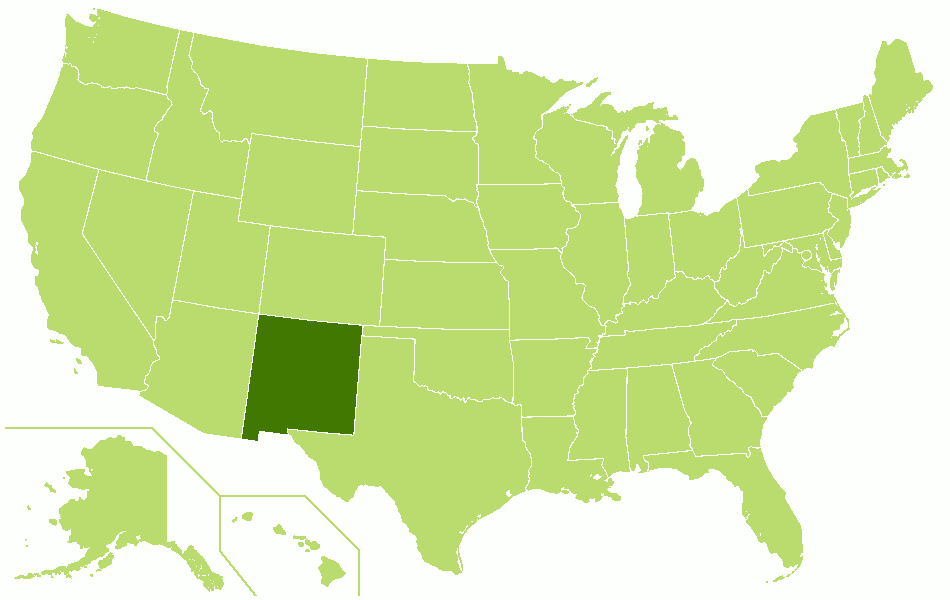
Land of Enchantment
| Location: | Southwestern United States |
| Coordinates: | 34° 30′ N, 106° 00′ W |
| Size: | • 630 km N-S; 565 km E-W • 390 miles N-S; 350 miles E-W |
| Terrain: | Mountains and high plateau in the north and west; flat plains in the east |
| Climate: | Very dry with occasional thunderstorms. Hot summers; winters are cold in the north, but warm in the south |
| Highest point: | Wheeler Peak 4,013 m / 13,167 ft |
| Forest: | 32% (2016) (source) |
| Population: | 2,096,829 (2019) |
| Population density: | Very low (7/km²) |
| Capital: | Santa Fe |
| Languages: | English, Spanish |
| Human Development Index: | Very High (0.906) |
.jpg)

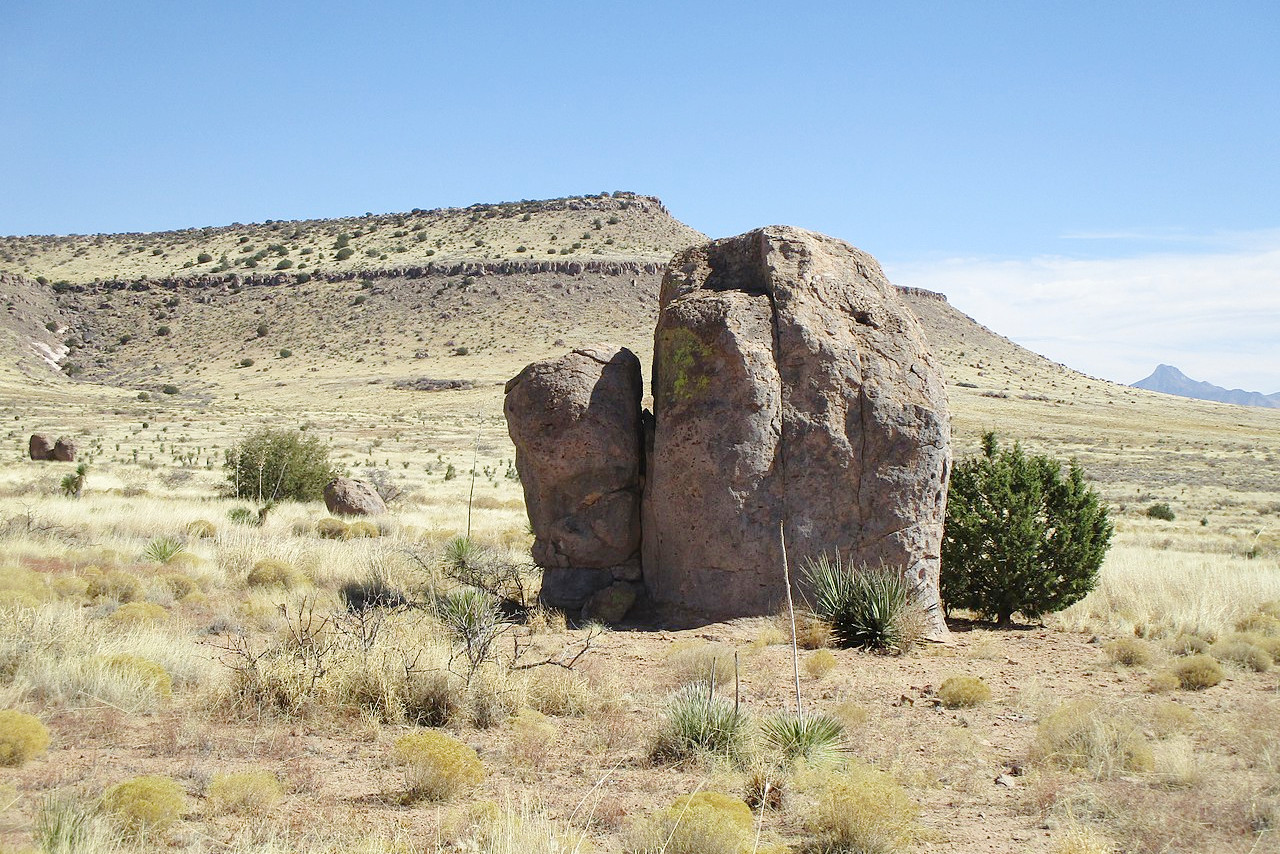
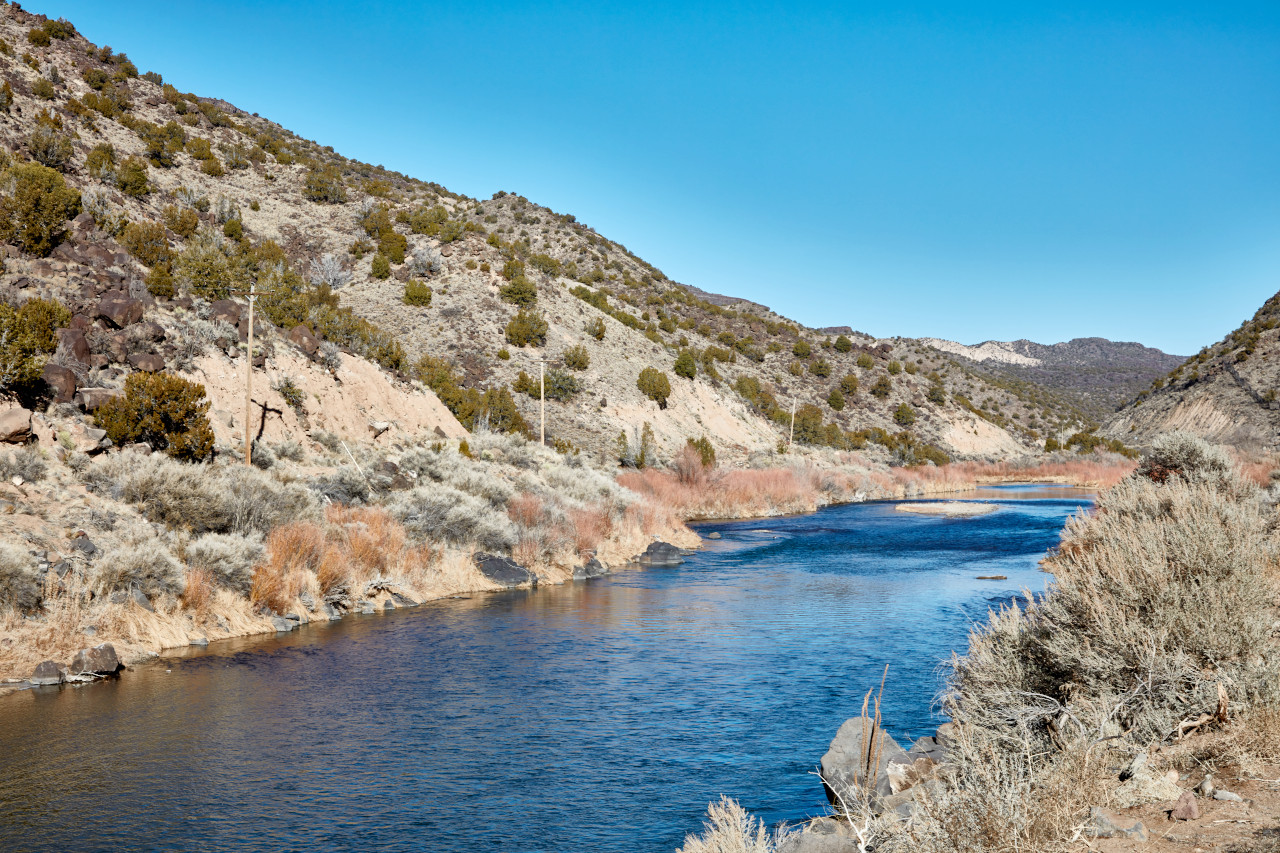


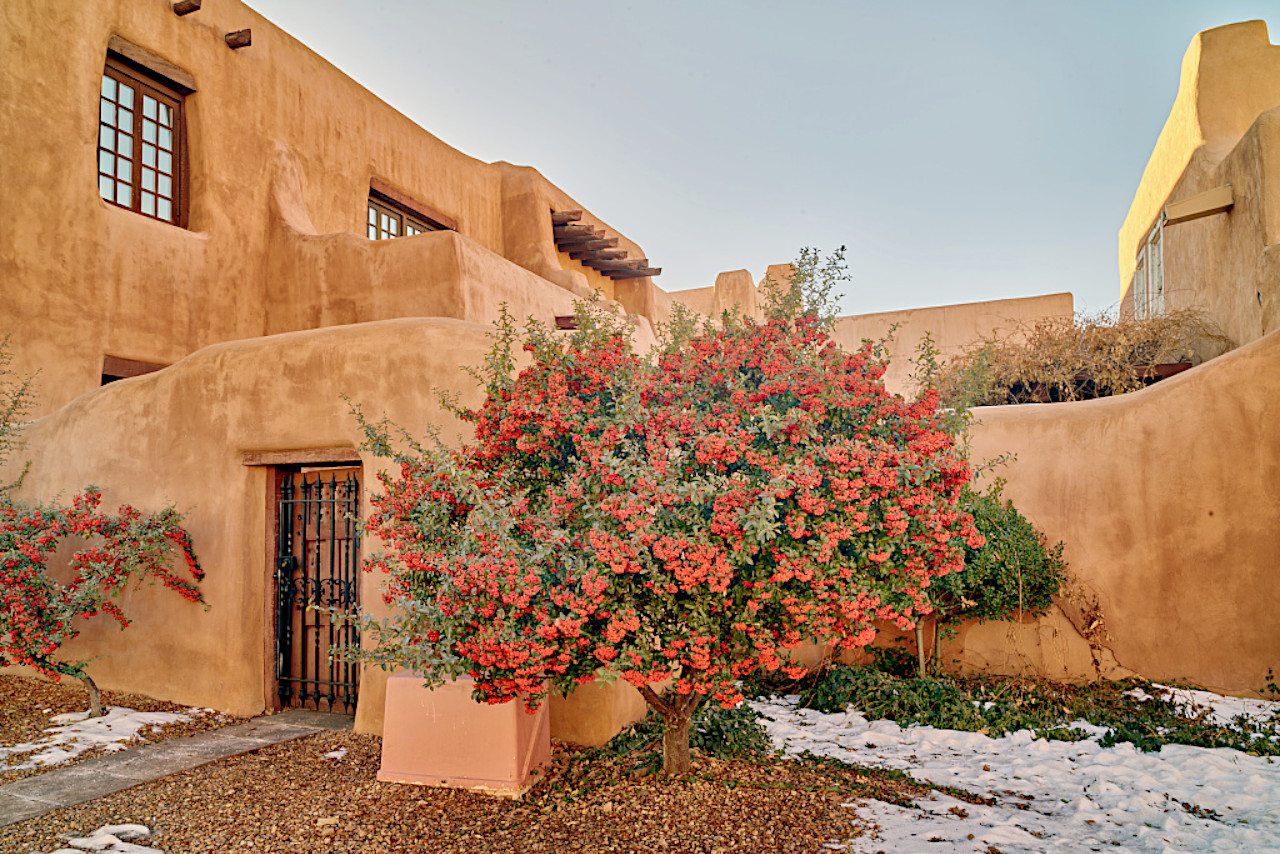
.jpg)
.jpg)